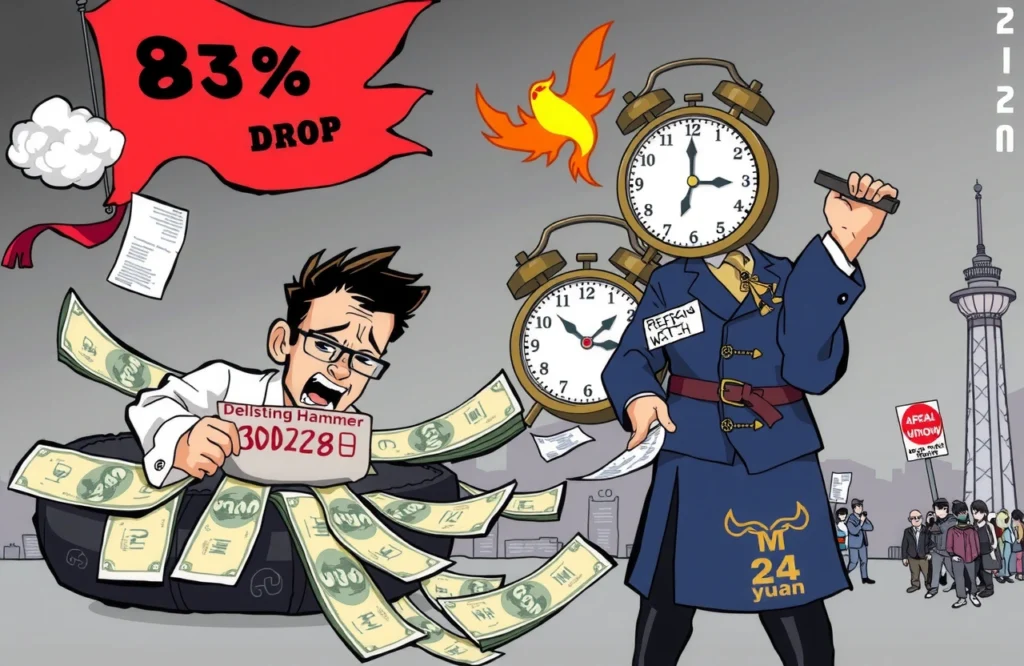The Contrarian Playbook Reawakens
Legendary Chinese fund manager Zhang Kun (张坤) built his reputation on a core conviction: true portfolio managers must dare to defy market consensus at least two or three times during their careers. In Q2 2025, he activated this principle once more, maneuvering against prevailing winds while his flagship funds trailed benchmarks by 7.5 percentage points. As property markets slumped and investor fears deepened, Kun maintained equity exposure above 91% across holdings—doubling down on premium baijiu stocks while pivoting capital from US markets toward Korean equities. His quarterly report lays bare this audacious framework: today’s pervasive pessimism about China’s economy will inevitably fracture, resetting asset valuations.
Three Battlegrounds of Conviction
The Misalignment of Bond Markets
Zhang Kun’s sharpest divergence emerged in macroeconomic analysis. ‘The market incorrectly linearizes recent trends,’ he asserted, referencing China’s subdued GDP growth impacting sovereign bond yields. While investors piled into long-term Chinese government debt—pushing yields to levels Kun deemed ‘mismatched with economic potential’–he maintained: ‘We do not agree with this valuation disconnect.’ His skepticism stems from developmental fundamentals: China’s $13,720 per capita GDP remains far below developed economies, signaling decades-long expansion capacity. Kun emphasized how unleashing market forces and innovation could realistically achieve Beijing’s ‘2035 medium-developed status’ target.
Property and Inflation Pressures
Kun dedicated significant commentary to China’s twin anchors—property deflation and negative CPI prints. Citing a 2.9% year-on-year property sales contraction and -10.7% investment plunge, he noted: ‘Secondary pricing reached five-year lows across major cities.’ Yet Kun framed these declines as cyclical triggers for unwarranted despair rather than structural collapses. ‘Investors erroneously extrapolate these into permanent realities,’ he countered, positing that recovering household optimism would organically lift living standards—and corporate profits—over time.
Equity Flight to Safety
Paradoxically pronounced risk-aversion animated Kun’s buy signal. With equity capital gravitating toward ‘quasi-government bonds’ (low-volatility exporters or utilities), he positioned sub-4% Chinese Treasury yields as unsustainable anomalies: ‘Such bond pricing contradicts future economic vitality.’ Patient investors, he urged, should exploit mispriced stocks factoring in improbable worst-case scenarios. Though acknowledging timing uncertainty, Kun stressed: ‘Predicting inevitability outweighs predicting chronology’.
Tactical Moves Amid the Standoff
The Baijiu Paradox: Aggressive Polarization
Zhang Kun executed surprising divergence within his trademark baijiu positions:
- Massive boosts to premium producers: Wuliangye (五粮液), Kweichow Moutai (贵州茅台), Luzhou Laojiao (泸州老窖), and Shanxi Xinghuacun Fen Wine Factory Co (山西汾酒) became top-five holdings
- Simultaneous exit from Yanghe Brewery (洋河股份) after 19 consecutive quarters in portfolios
- Debut position: JD Health (京东健康) replaced Yanghe in key funds
Global Reallignment Strategy
The manager overhauled international allocations:
- -5.89% US exposure; +3.6% Korean weighting amid AI chip momentum
- SK Hynix (SK海力士) became top overseas holding at 9.91% weight despite slight trimming
- Microsoft entered top-10 alongside travel platform CTrip
- Exits: fintech firm Futu Holdings and luxury retailer Prada
The Firm Hand Through Headwinds
Despite bleeding assets under management (AUM sinking below $76 billion USD equivalent), Kun’s resolve remained unshaken. He sustained every fund’s equity allocations above 91%—refusing tactical defensiveness even as peers chased benchmarks. This fortitude reflects his thesis’s cyclicality: previous ‘defiances’ like his 2017 healthcare pivot and 2020 consumer retreat ultimately validated, rewarding followers. Today’s positions crystallize seven strategic priorities:
- Sovereign yields normalize toward economic reality
- Enterprise competitiveness strengthens throughout downturns
- Stocks already price severe earnings erosion
- Shareholder yield buffers provide margin of safety
- Multiple compression creates generational entry points
- Policy catalysts may accelerate pessimism rupture
- Corporate China’s innovation pipeline remains underestimated
Enduring Market Psychology Patterns
Zhang Kun’s framework highlights recurring behavioral finance cycles observed during prior macroselloffs. Episodic extremes—whether China’s 2015 equity bubble or 2021 property deleveraging panic—consistently gave way to transitional rebounds. Kun suggests the ~$6.7 trillion USD Chinese equity market exhibits parallels: investor positioning reveals profound capitulation metrics matched only during 2008 and 2018 crises. Such anomalies historically precede multi-year runways as
The Catalyst Horizon
History shows sentiment breaks unpredictably—triggered by incremental policy shifts or micro-level earnings surprises. Potential inflection vectors include:
- Accelerated state-backed property inventory purchases
- Technology export breakthroughs in AI/EV/semiconductor sectors
- Urban consumption recovery via income support programs
- Corporate dividend renaissance enhancing total returns
Critics note Kun’s heavy concentration risks: baijiu stocks comprise 30%+ of several funds despite shifting demographics. Others cite Korea’s cyclical sensitivity amid memory chip volatility. Yet Kun’s manifesto rings clear: ‘Low valuations married with durable business models create asymmetric opportunities.’ Its validation path mirrors capitalism’s eternal tension—between collective despair and irrepressible enterprise.




